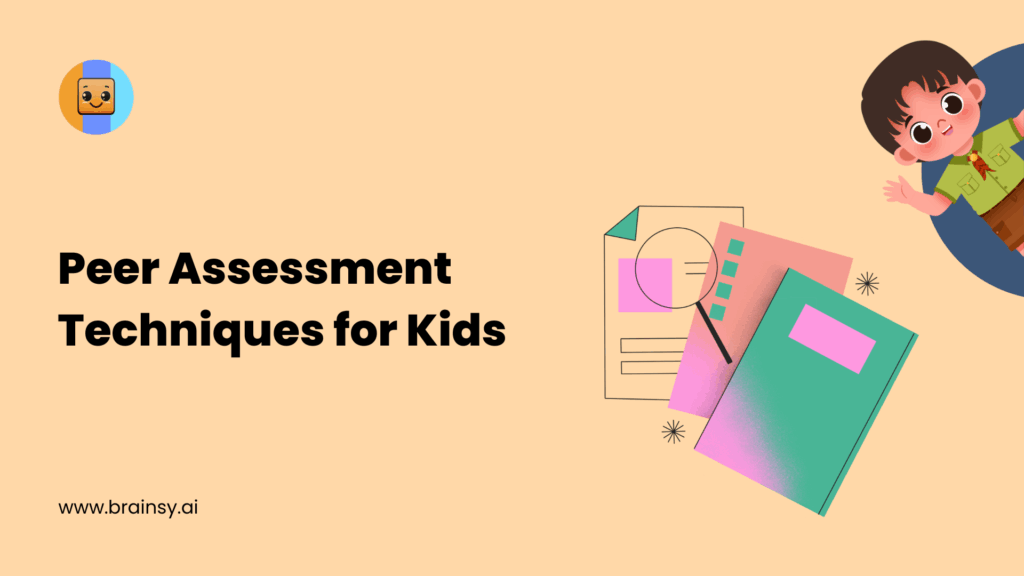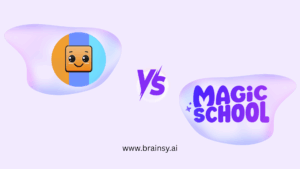Introduction to Peer Assessment Techniques
In the ever-evolving landscape of education, peer assessment has emerged as a vital tool for enhancing the learning process and student engagement. As we delve into this topic, it’s essential to understand how peer evaluation can significantly influence both teaching and student assessment processes. By involving students in evaluating each other’s work, we foster a sense of responsibility and a deeper understanding of the subject matter.
Peer assessment techniques empower students to develop critical thinking skills and improve their ability to give and receive constructive feedback. This is crucial not only for academic growth but also for personal development. When students are actively involved in assessing their peers, they engage more deeply with the content, leading to improved retention and comprehension.
To make peer assessment effective, educators need to implement structured techniques that suit the classroom environment. This includes clear guidelines and success criteria, as well as fostering a supportive atmosphere where students feel comfortable sharing and receiving feedback. By exploring various assessment methods and leveraging platforms like Brainsy’s AI tools for students, we can ensure that students gain the most from these collaborative learning experiences.
The Importance of Peer Reviews in Education
Peer reviews play a pivotal role in educational settings by promoting active learning and collaboration. They allow students to view their work from different perspectives, helping them identify areas for improvement. This collaborative approach also encourages students to engage with the learning material more thoroughly, as they must understand it well enough to assess others.
Moreover, peer reviews help develop essential life skills such as communication, empathy, and the ability to self-assess. When students evaluate their peers, they learn to articulate feedback thoughtfully and constructively. This not only enhances their ability to communicate effectively but also fosters a culture of mutual respect and understanding within the classroom.
In addition to these benefits, peer reviews can alleviate some of the burdens on educators by distributing the assessment workload. By incorporating peer reviews into the classroom, teachers can experience stress-free grading, allowing them to focus more on facilitating learning and less on administrative tasks. This shift leads to a more dynamic, interactive, and stress-free grading for teachers, ultimately enhancing the overall educational environmen
Understanding Natural Language Processing in Assessment
Natural Language Processing (NLP) is a branch of artificial intelligence that deals with the interaction between computers and humans using natural language. In the context of peer assessment, NLP can be a game-changer by automating the assessment of the quality of peer reviews using natural language processing techniques. This not only improves efficiency but also enhances the accuracy and consistency of feedback.
By leveraging NLP technologies, we can develop systems that analyze written feedback for sentiment, relevance, and constructiveness. These systems can identify patterns in feedback that may not be immediately apparent to human evaluators, providing deeper insights into the assessment process. This level of analysis helps ensure that students receive high-quality feedback that is both objective and actionable.
However, integrating NLP into peer assessment requires careful consideration of privacy and ethical issues. It’s crucial to ensure that any automated systems used in educational settings are transparent and respect the privacy of student data. By addressing these concerns, we can harness the power of NLP to enhance peer review processes and contribute to a more effective learning environment.
Overview of Automated Assessment Techniques
Automated assessment techniques have transformed the way we approach education, offering new opportunities to enhance learning and evaluation. These techniques utilize advanced technologies like NLP, machine learning, and artificial intelligence to streamline assessment processes. By automating certain aspects of assessment, educators can focus more on teaching and less on administrative tasks.
One of the key benefits of automated assessment is its ability to provide immediate feedback. This instant response allows students to quickly identify areas for improvement and adjust their learning strategies accordingly. Moreover, automated systems can handle large volumes of data efficiently, making them ideal for assessing numerous peer reviews in a timely manner.
Despite these advantages, it’s important to recognize the limitations of automated assessment. While technology can enhance the assessment process, it cannot replace the nuanced understanding and empathy that human evaluators bring. Therefore, a balanced approach that combines automated techniques with traditional evaluation methods is essential for achieving optimal results in both formative assessment and summative assessment contexts.
15 Engaging Peer Assessment Techniques for Kids
To foster an engaging and effective peer assessment environment, educators can implement a variety of techniques tailored to students’ needs and learning styles. Here are 15 techniques that can be integrated into the classroom:
- Rubric-Based Assessment: Provide students with clear rubrics and success criteria to evaluate their peers’ work, ensuring consistency and transparency in feedback.
- Peer Feedback Circles: Organize small groups where students rotate roles, offering feedback to each other in a collaborative setting.
- Two Stars and a Wish: Encourage students to give two positive comments and one area for improvement, promoting balanced and constructive feedback.
- Gallery Walks: Display students’ work around the classroom and allow peers to leave feedback on sticky notes, fostering a sense of community and shared learning.
- Self-Assessment Journals: Combine self and peer assessment by having students reflect on their work and compare it with peer feedback, promoting a growth mindset.
- Peer Interviews: Pair students to discuss and review each other’s work, enhancing communication skills and understanding.
- Digital Platforms: Use online tools to facilitate peer assessment, allowing students to give and receive feedback in a structured digital environment.
- Role-Playing: Have students assume different roles (e.g., teacher, critic) while assessing peers, encouraging diverse perspectives.
- Feedback Sandwich: Teach students to structure feedback by starting with a positive comment, followed by a suggestion, and ending with another positive note.
- Peer Assessment Workshops: Organize workshops where students learn effective feedback strategies and practice peer evaluation in a guided setting.
- Blind Peer Review: Anonymize work to ensure unbiased feedback, focusing on the content rather than the creator.
- Collaborative Rubric Creation: Involve students in creating assessment rubrics, fostering ownership and understanding of evaluation criteria based on Bloom’s taxonomy.
- Reflective Peer Assessment: Encourage students to reflect on the feedback they give and receive, promoting self-awareness and growth.
- Peer Assessment Portfolios: Compile feedback received over time into a portfolio, allowing students to track their progress and development throughout the learning process.
- Peer Review Panels: Form panels of students to evaluate work collectively, encouraging diverse viewpoints and collaborative decision-making.
Implementing these techniques can create a dynamic and supportive peer assessment environment, enhancing the overall quality of feedback and learning.
Implementing Classroom Assessment Techniques for Peer Review
Integrating peer assessment techniques into the classroom requires thoughtful planning and execution. The first step is to establish clear objectives and guidelines for the assessment process. Educators should communicate the purpose and benefits of peer assessment to students, ensuring they understand the expectations and criteria for evaluation.
Next, it’s important to select appropriate techniques that suit the students’ age, skill level, and learning objectives. Using a mix of methods can cater to different learning styles and keep students engaged. For instance, younger students might benefit from simple feedback systems like “traffic lights” or feedback stickers, while older students may thrive with more complex approaches like peer review panels or digital platforms.
Training students in effective feedback practices is also crucial. Educators should provide guidance on how to give and receive constructive feedback, emphasizing the importance of empathy and respect. By creating a supportive environment where students feel comfortable sharing their thoughts, teachers can foster a culture of collaboration and continuous improvement in the classroom, especially during group projects and collaborative assignments.
Self and Peer Assessment Techniques: Best Practices
To maximize the benefits of self and peer assessment, educators should adhere to best practices that ensure the process is fair, effective, and meaningful. One essential practice is to involve students in the creation of assessment criteria. By participating in this process, students gain a deeper understanding of the evaluation standards and develop a sense of ownership over their learning.
Another best practice is to provide regular feedback on the feedback. This involves reviewing the quality of peer assessments and offering guidance on how to improve. By doing so, teachers can help students refine their feedback skills and ensure that the assessments remain constructive and valuable.
Finally, it’s important to integrate self-assessment with peer assessment. Encouraging students to self-assess their work before and after receiving peer feedback can deepen their understanding and promote self-awareness. This dual approach not only enhances individual learning but also strengthens the overall peer assessment process by creating a cycle of continuous reflection and growth.
Benefits of Using Natural Language Processing in Peer Review
Incorporating Natural Language Processing (NLP) into peer review processes offers numerous advantages that can revolutionize the way feedback is delivered and received. One of the primary benefits is the enhanced accuracy and objectivity of feedback. NLP algorithms can analyze the language used in peer reviews to identify bias, sentiment, and relevance, ensuring that the feedback is both constructive and balanced.
Additionally, NLP can significantly reduce the time and effort required for assessing peer reviews. Automated systems can quickly process large volumes of text, providing timely feedback that allows students to make immediate improvements. This efficiency not only benefits students but also frees up educators to focus on more personalized teaching and mentoring.
Moreover, NLP can offer valuable insights into the peer review process by identifying patterns and trends in feedback. These insights can help educators fine-tune their assessment strategies and address any recurring issues or misconceptions. By leveraging NLP, we can enhance the quality and effectiveness of peer reviews, ultimately leading to improved learning outcomes for students.
Challenges in Peer Assessment and How to Overcome Them
While peer assessment offers many benefits, it also presents certain challenges that educators must navigate to ensure success. One common challenge is student reluctance or lack of confidence in providing feedback. To address this, educators should provide training and support to help students develop the necessary skills to evaluate their peers constructively.
Another challenge is ensuring fairness and consistency in the assessment process. Variations in feedback quality can arise due to differences in student understanding and interpretation of evaluation criteria. To mitigate this issue, educators can use rubrics and standardized guidelines to maintain consistency and clarity in peer assessments.
Finally, managing the emotional aspects of peer assessment can be challenging, as students may feel uncomfortable receiving criticism from their peers. Creating a positive and respectful classroom culture is essential to overcoming this hurdle. Encouraging open communication and emphasizing the value of feedback as a tool for growth can help students view peer assessment as a positive and constructive experience.
Resources and Tools for Self and Peer Assessment Techniques
Conclusion
In conclusion, peer assessment is a powerful educational tool that fosters collaboration, critical thinking, and personal growth among students. By implementing effective peer assessment techniques and leveraging technologies like Natural Language Processing, educators can enhance the quality and impact of feedback in the classroom.
As we continue to explore and refine these methods, it’s essential to remain focused on the ultimate goal: empowering students to take an active role in their learning journey. By embracing peer assessment and the innovative tools available, we can create a more dynamic and engaging K-12 educational experience that prepares students for success both inside and outside the classroom.
Are you ready to revolutionize your classroom with engaging peer assessment techniques? Explore the comprehensive resources and tools at Brainsy.ai to start enhancing the quality of reviews and fostering a collaborative learning environment today!






